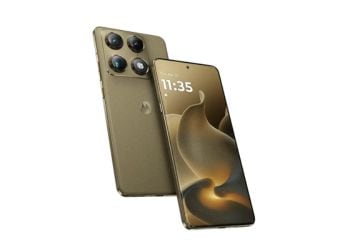- Home
- Science
- Science News
- Russia Scraps Robot Fedor After Space Odyssey
Russia Scraps Robot Fedor After Space Odyssey
Fedor, or Final Experimental Demonstration Object Research, was built to assist space station astronauts.
It's mission over for a robot called Fedor that Russia blasted to the International Space Station, the developers said Wednesday, admitting he could not replace astronauts on space walks.
"He won't fly there any more. There's nothing more for him to do there, he's completed his mission," Yevgeny Dudorov, executive director of robot developers Androidnaya Tekhnika, told RIA Novosti news agency.
The silvery anthropomorphic robot cannot fulfill its assigned task to replace human astronauts on long and risky space walks, Dudorov said.
Fedor, or Final Experimental Demonstration Object Research, was built to assist space station astronauts.
A storm of publicity surrounded Fedeor's space odyssey and provided some light relief for Russia's beleaguered space industry.
In the last year it has seen the unprecedented failure of a manned launch and continuing delays on construction of the Vostochny spacepad where President Vladimir Putin upbraided officials last week.
But Fedor turned out to have a design that does not work well in space -- standing 180 centimetres (six feet) tall, its long legs were not needed on space walks, Dudorov said.
The Russian space agency said the legs were immobilised during the trip and Fedor was not programmed to grab space station hand rails to move about in microgravity.
Dudorov said developers were sketching out plans for a replacement "that must suit the demands of working on the outside of the ship".
Fedor, officially Skybot F-850, rocketed to the ISS on August 22, entering the orbiting laboratory five days later.
On the station, the robot posed holding a Russian flag and for hugs with cosmonauts who were assigned to train it before touching down back on Earth on Monday.
A final tweet posted in an account in the robot's name said: "Now I'm in my case. I await directions for further tests after the flight."
Fedor was not the first robot to go into space. In 2011, NASA sent up Robonaut 2, a humanoid developed with General Motors that had a similar aim of working in high-risk environments.
It was returned to Earth in 2018 after experiencing technical problems.
In 2013, Japan sent up a small robot called Kirobo along with the ISS's first Japanese space commander. Developed with Toyota, it was able to hold conversations -- albeit only in Japanese.
Catch the latest from the Consumer Electronics Show on Gadgets 360, at our CES 2026 hub.
- Samsung Galaxy Unpacked 2025
- ChatGPT
- Redmi Note 14 Pro+
- iPhone 16
- Apple Vision Pro
- Oneplus 12
- OnePlus Nord CE 3 Lite 5G
- iPhone 13
- Xiaomi 14 Pro
- Oppo Find N3
- Tecno Spark Go (2023)
- Realme V30
- Best Phones Under 25000
- Samsung Galaxy S24 Series
- Cryptocurrency
- iQoo 12
- Samsung Galaxy S24 Ultra
- Giottus
- Samsung Galaxy Z Flip 5
- Apple 'Scary Fast'
- Housefull 5
- GoPro Hero 12 Black Review
- Invincible Season 2
- JioGlass
- HD Ready TV
- Laptop Under 50000
- Smartwatch Under 10000
- Latest Mobile Phones
- Compare Phones
- Samsung Galaxy A07 5G
- Vivo Y500i
- OnePlus Turbo 6V
- OnePlus Turbo 6
- Itel Zeno 20 Max
- OPPO Reno 15 Pro Mini 5G
- Poco M8 Pro 5G
- Motorola Signature
- Lenovo Yoga Slim 7x (2025)
- Lenovo Yoga Slim 7a
- Realme Pad 3
- OPPO Pad Air 5
- NoiseFit Pro 6R
- Xiaomi Watch 5
- Acerpure Nitro Z Series 100-inch QLED TV
- Samsung 43 Inch LED Ultra HD (4K) Smart TV (UA43UE81AFULXL)
- Asus ROG Ally
- Nintendo Switch Lite
- Haier 1.6 Ton 5 Star Inverter Split AC (HSU19G-MZAID5BN-INV)
- Haier 1.6 Ton 5 Star Inverter Split AC (HSU19G-MZAIM5BN-INV)












